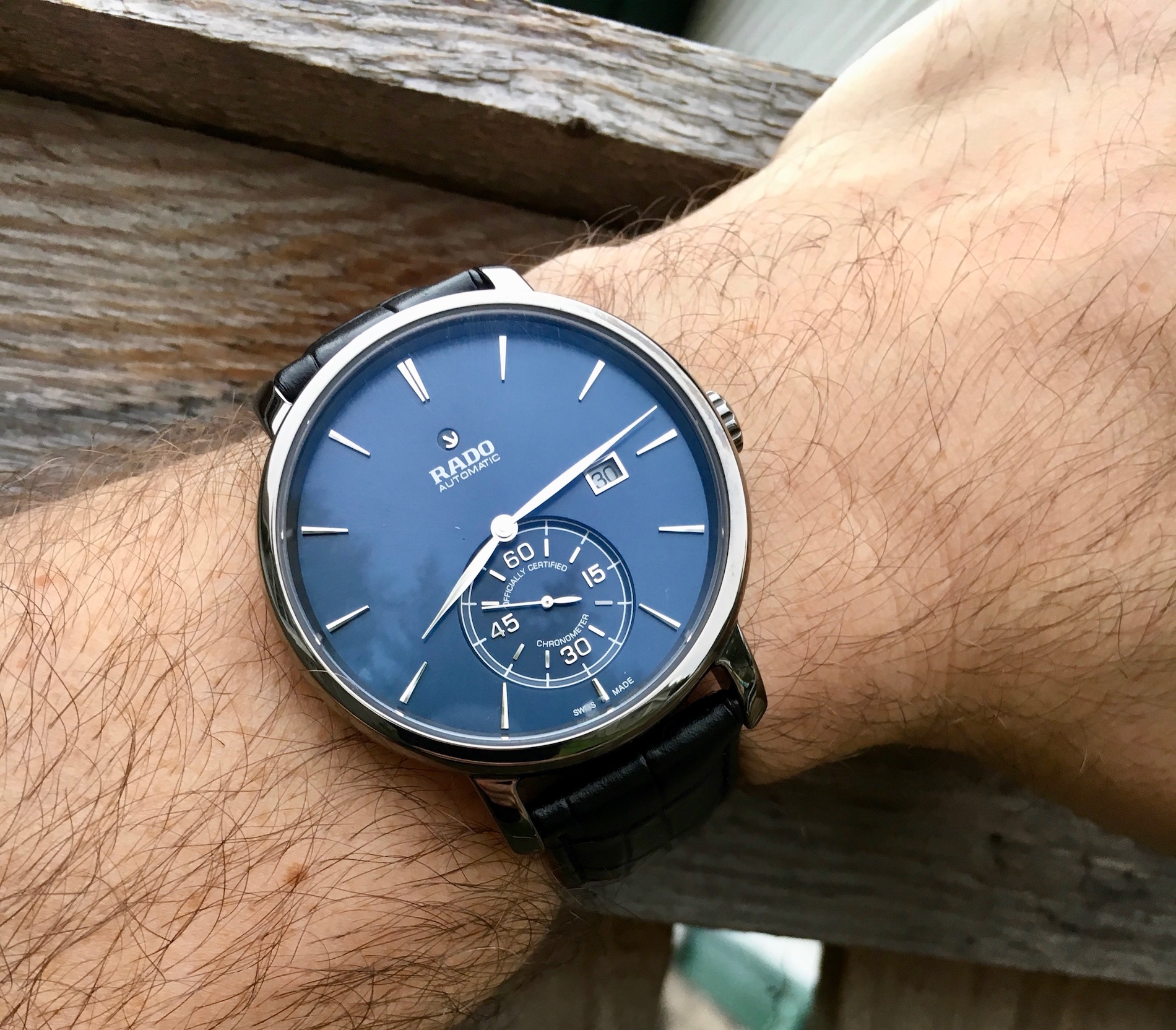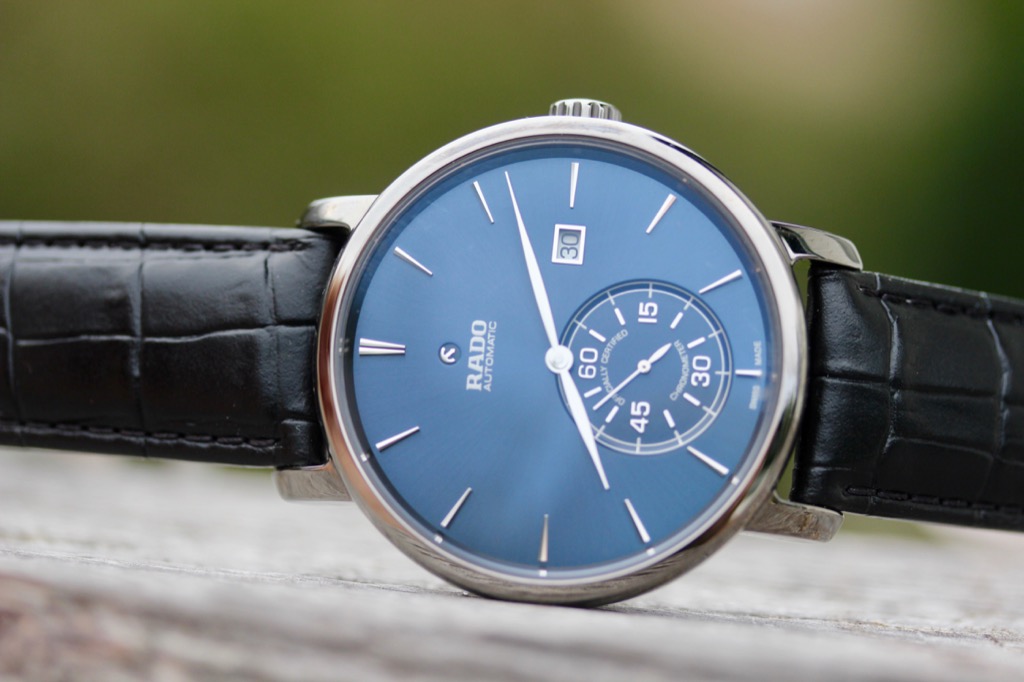
When you think of Rado – if you’re familiar with them – you know to expect a high-tech ceramic being used in some form or fashion. You might also expect some bold (even crazy) colors used to highlight and draw attention to the material. What you might not be expecting from the brand is something that looks more restrained or like a steel case. Well, that’s what we’ve got in the form of the Rado DiaMaster Petite Seconde.
Prior to this review, I had actually never handled a Rado in person. While I may have dealt with plenty of other watches coming from the Swatch Group, and written about Rado from press releases, for some reason, I never quite had one grace my wrist. Obviously, that changed with the arrival of the Rado DiaMaster Petite Seconde.
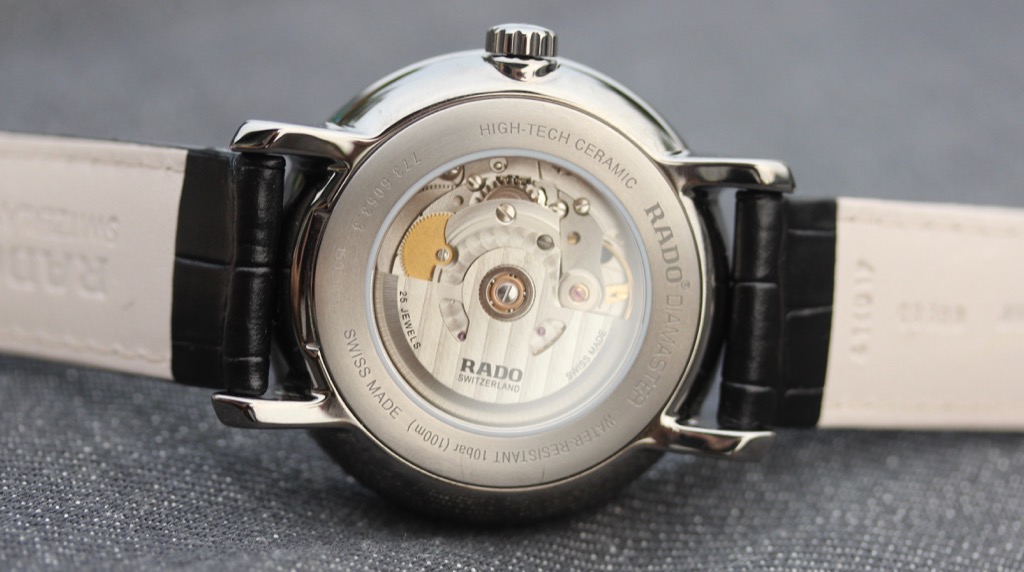
Rado DiaMaster Petite Seconde Movement
Now, given that Rado is a part of the Swatch Group, you’d be right to point the arrow in the direction of an ETA movement showing up in the case. Here, it’s an ETA C07.881 which is – at least for me – not one that is familiar at all (I’m more accustomed to the 4-digit varieties). What’s critical to note here is hiding away in the spec sheet.
This particular movement brings along COSC certification (something that only 6% of Swiss watches can achieve, apparently), an 80-hour power reserve (for those rare moments you’re not wearing the watch), and the always-welcome silicon hairspring (reducing susceptibility to magnetism is a good thing in my book). In other words, you’ve got a rather nice engine driving this watch.

The Plasma Ceramic Case
If you’re going to have a good movement, you might as well protect it, yeah? Well, on the Rado DiaMaster Petite Seconde, that protection comes in the form of their plasma ceramic case, which has a monobloc construction. I want to spend some time talking about this case because it even confused me at first. I expected ceramic from Rado, and when I opened up the box, I thought I was looking at a polished steel case, albeit one with a darker finish to it.
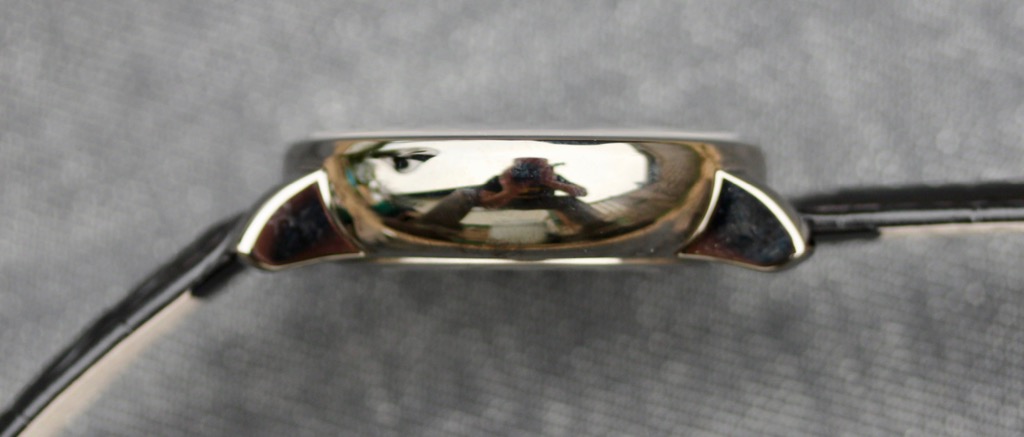
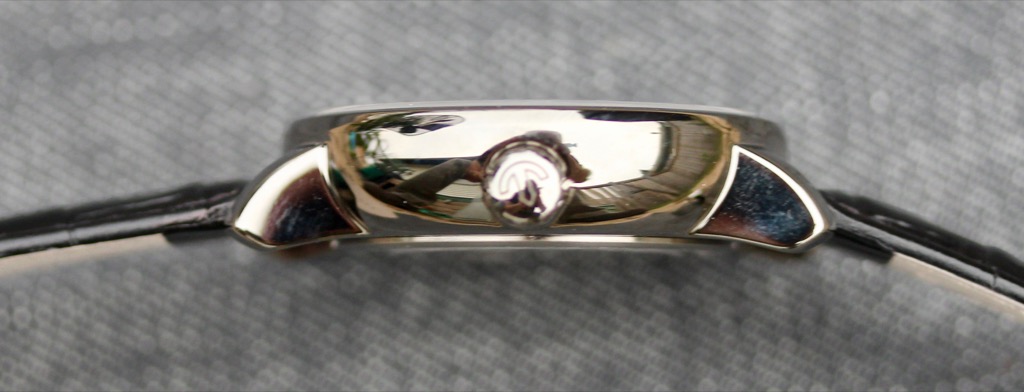
That may not seem like much, but I think it speaks volumes to the brand’s finishing capabilities. What you’ve got with the case is a material (in the ceramic) that is highly durable and scratch-resistant, but flies under the radar by looking like “just” a steel case. I also want to note that I found the case to be very, very smudge resistant. For me, I tend to avoid high-polish cases, as they show every single smudge and fingerprint from handling. On the Rado DiaMaster Petite Seconde, though, I was not able to leave any discernible marks on the watch. So, yeah, this one stays clean.
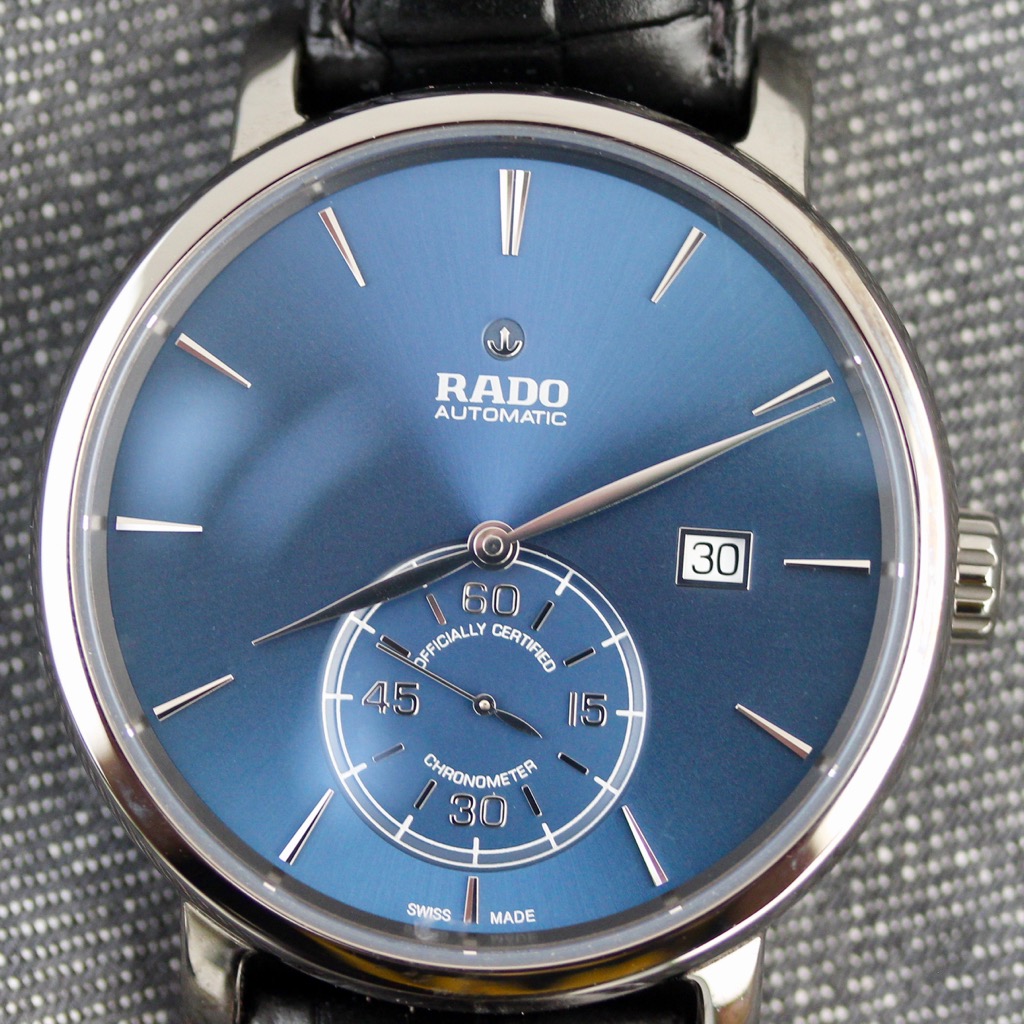
Rado DiaMaster Dial
I was rather keen on how clean the dial of the Rado DiaMaster Petite Seconde was as well. You’ve got those narrow (but just the right length) Rhodium hands paired with the long, polished, Rhodium stick indices. It’s a classic look, and the high polish stands out almost like they have their own light source against the dark blue of the dial. It’s not quite a matte finish, and the blue here is a very lovely shade that pairs nicely with the dark argent color tone of the case.

